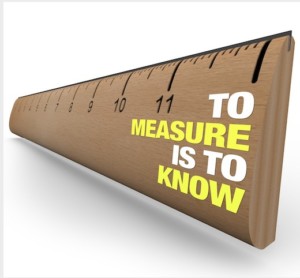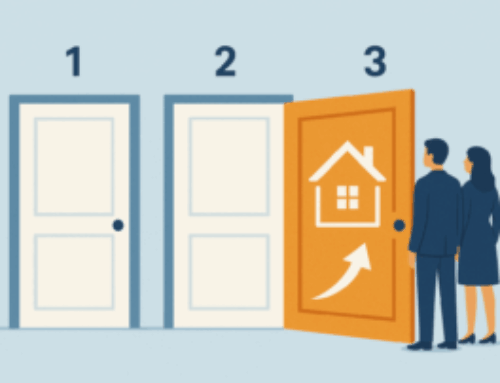 Every agent and broker knows they SHOULD have accurate square footage that they measured themselves or hired a professional for, yet many today still rely on square footage listed in public records without any verification of accuracy. When preparing a CMA or listing presentation, many agents calculate their suggested selling price based on COMPS that also use tax records to reflect the square footage of the property. Still others have not been trained properly on what should be included and excluded from square footage calculations.
Every agent and broker knows they SHOULD have accurate square footage that they measured themselves or hired a professional for, yet many today still rely on square footage listed in public records without any verification of accuracy. When preparing a CMA or listing presentation, many agents calculate their suggested selling price based on COMPS that also use tax records to reflect the square footage of the property. Still others have not been trained properly on what should be included and excluded from square footage calculations.
The net effect is that a home can be overpriced or underpriced based on an inaccurate calculation of square footage which can lead to complaints or even lawsuits.
All of these practices are ill-advised and can get a broker in trouble. Here’s an interesting case published on page 9, Volume 49 of the North Carolina Real Estate Commission’s Real Estate Bulletin in May 2018 which articulates a complaint made against a broker for inaccurately representing the square footage of a property.
According to Stephen L. Fussell, Senior Consumer Protection Officer says in his article entitled Square Footage Errors, A Regulatory Affairs Division Case Study, “Any broker who includes a square footage figure in the MLS or any other form of advertising should exercise great care to accurately determine and report the square footage. A broker should never rely upon tax records, MLS data for previous listings/sales, previous appraisals, blueprints, or the seller’s word for square footage. “
To make matters worse there is no nationally recognized standard for measuring square footage. One area might include an unheated enclosed gazebo as square footage, for example and in another county an unheated enclosed gazebo cannot be counted as living space. How does a consumer REALLY know what they’re buying especially if they are moving from one region to another? Isn’t it a licensed real estate agent’s responsibility to protect the best interest of consumers? How can consumers be protected effectively when there is no consistent definition of square footage nationally?
It seems like this topic is ripe for NAR or RESO to step in and create a standardized method for measuring square footage nationwide compliant with ANSI standards. There are books and training classes at housemeasures.com available to teach REALTORS® how to follow these standards, but to my knowledge there is no requirements for them to actually confirm the accuracy of the square footage. State Associations offer classes on proper measurement techniques to meet local regulations as well.





This is a good article about measuring square footage. In fact, in many taxing districts, they track both residential space and total space.
But, it’s chicken & egg….Is the real estate industry to be the source of the data or is the tax authority the source of the data? Whose measurements are valid. I live in a 50 unit set of townhouses, many of which are the same “model”….Yes, the sales records as well as the tax records show different square footage measurements at different dates for the same property…
If the real estate industry is the “truth”, then there needs to be standards (e.g. RESO?) and there needs to be training (the agent, the home inspector, etc)
Similarly, RE Technology also published a good article about tax rates and “who to trust”..
https://retechnology.com/article-lists/23208-where-do-property-values-come-from
My contention is that property tax data is already tough to retrieve from county records, and not always right, and therefore can’t be depended on to calculate square footage and surely can’t be used to drive a fair market value (CMA)
Your point is well-taken Doug. While the tax records should be the most accurate, we all know they are not for a variety of reasons. Since real estate agents are licensed and agree to provide the most accurate advice and counsel they can for their clients, I think the industry would be well-served to take it on. Minimally there needs to be a lot more education about what does and does not get included in square footage along with an urging for agents to hire professionals to do the measuring for them. They should not rely on tax records if they truly want to provide the most diligent support to reflect as accurate a square footage as possible. Some markets have opted out completely of even sharing square footage. I think that’s a cop-out but I understand how they get there.
Here are two of my blog posts on this topics:
May 2018 https://www.brightpathedu.com/stop-using-tax-records-as-a-source-of-square-footage-in-mls/
September 2016 https://www.brightpathedu.com/square-footage-in-your-listings-on-mls/
In our teaching all across North Carolina of real estate broker classes, including Square Footage Secrets and Case Law and the Code (two cases against brokers who did not measure,) we are encouraged lately by the increasing number of listing brokers and buyer agents that are personally measuring the property. However, there are still so make brokers that just seem to run away from their responsibilities regarding square footage. One factor we’ve noticed is the ability or inability of a firm’s Broker-in-Charge to actually be “in charge” and require their agents to follow the NC Real Estate Commission’s requirements.
Thanks for sending along these blog posts – looks like brokers need to pay a lot more attention to this important topic.